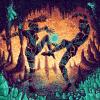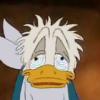Seriously though, for those interested, the USP for Dietary Supplements has dozens of specific monographs on many of the vitamins and herbal extracts that are found in the types of stores the Attorney General was targeting that can be used to truly determine the quality of the type of supplements they were targeting. Here's a link to show the USP Dietary Supplements info that is readily available.
http://www.usp.org/s...ents-compendium
There are several labs all over the country qualified to do proper validated testing. To go with an inappropriate testing protocol like DNA testing on products not likely to contain significant DNA when proper testing methods are so readily available is like trying to convict witches by drowning them. If they live they are witches and are burned, if they die they were innocent. In other words, it's just designed to be sure everything will fail and make a bunch of sensational headlines. The finding of DNA of other things not on the label isn't too surprising when you realize that there are incidental additives and processing aids that don't have to be declared in all food, drug and supplement products. Here's a link that describes why these ingredients don't get declared on labels
http://www.foodsafet...y/#.V28eV5BHarU
A better targeted approach to go after truly adulterated products would be to go after the products that are known adulteration problems. Like if someone followed the testing protocols published in the Botanical Adulterants Program where groups have already done the preliminary legwork to figure out how to expose truly adulterated products. Here's a link to info on that initiative
http://cms.herbalgra...erantsBulletins
The Botanical Adulterants Program is where work has been done to figure out how sleazy manufacturers figure out ways to get inferior or counterfeit ingredients to pass tests. Like using red dye #2 mixed with charcoal to make fake bilberry extract. The fake mixture passes the UV spectrophotometer test for authentic bilberry. Real bilberry extract goes for around $400-600 so people started doing stuff like this. The real bilberry extract is standardized to 25% anthocyanidins and the old test was to measure this by UV test. The program developed HPLC test methods that can tell if the old red dye #2 charcoal blend is being used and can also make sure the individual anthocyanidins present are the correct ones in actual bilberry and not anthocyanidins from other sources like peanut skins or Chinese blueberries. The anthocyanidins from those other sources don't have the same properties as the ones in real bilberry extract. This kind of approach, if used to screen products, would have been a better use of the resources than what the Attorney General did, but it wouldn't have made the dramatic sensational headlines that attacking the entire lines of products at big stores did.
Edited by MrSpud, 26 June 2016 - 12:17 AM.



















































